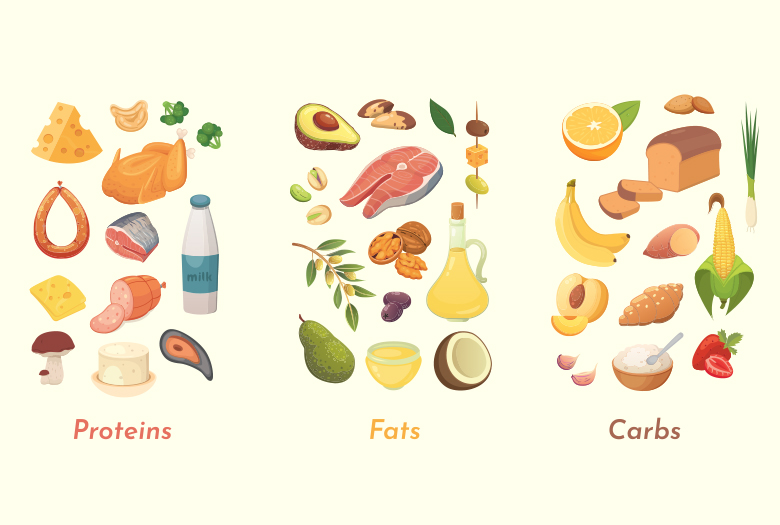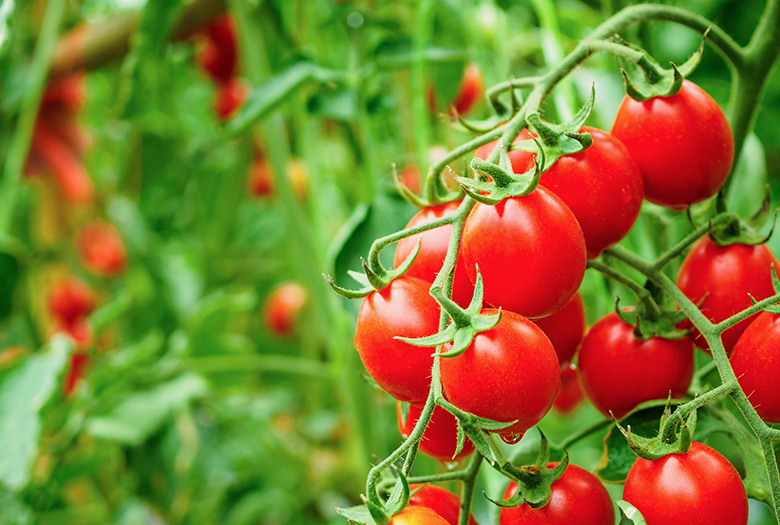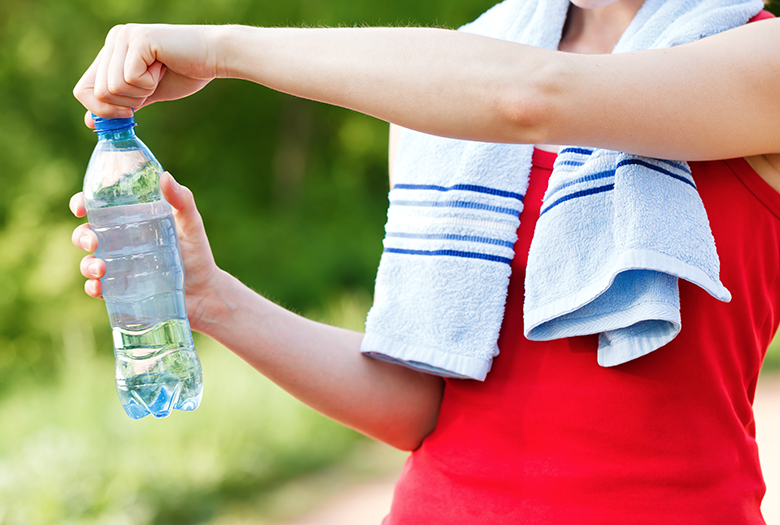Every year, thousands of people of all ages have surgery for bowel and bladder conditions. For many, getting a stoma is a life-saving procedure, which allows them to get back to their lives and the activities that they like to take part in.
New ostomates typically have a great many questions and concerns about life with a stoma, especially in the first few weeks. One of the most common of these is ‘What can I eat?’. People often wonder if it is necessary to stick to a strict diet, and many ask what effects nutrition might have on how their stoma works and what kind of social life they can enjoy.
Getting back to normal
After any major operation, there is always a recovery period, and, with a new stoma, it can take some time to get used to a changed body. While recovering in hospital, the staff will likely start you on more readily digestible food and nutritional supplements. These are specially chosen to allow your body to readjust to taking in fluids and nutrients. The staff will also monitor your recovery, so they can let you know when you are stable and ready to resume a normal diet.
The good news is that a stoma does not demand a special diet, and most ostomates are able to eat similarly to anyone else. Everyone is different, and those with allergies or certain other health conditions, such as diabetes or coeliac disease, will of course need to adjust their diet accordingly. However, in general, people with a stoma should follow the normal principles of healthy eating, with a just few stoma-specific issues to pay attention to.
Striking a balance
They key to a healthy diet is balance. Providing your body with the energy it needs to get on with your day requires a regular supply of macronutrients (carbohydrates, proteins and fats), micronutrients (vitamins and minerals) and fibre, all in the right proportions. A typical healthy diet might consist of:
• 55% carbohydrates, which are found in almost all food, but most of which will come from plant-based staples, such as bread, rice and potatoes
• 30% fats, which typically come from animal products (meat, fish, eggs and milk) or particular plants (nuts, seeds, olives and avocados)
• 10–15% proteins, which are also found in animal products (meat, fish and eggs) or particular plants (beans, peas, soy, nuts and seeds)
• Small amounts of a wide variety of vitamins and minerals, each of which is found in different foods (especially fruits and vegetables), meaning that the more varied your diet is, the more likely you are to be getting the best balance of micronutrients
• Plenty of fibre, which is found in parts of plants that the body cannot digest, such as the skins of unpeeled fruit and vegetables and the husks of wholegrain cereals.
The sources of these nutrients are not all equally healthy, and too much of anything can be a problem. Complex carbohydrates, like those in grains, are generally better for your health than simple carbohydrates, like sugar. Fat is an essential nutrient, and some, like the omega 3 and omega 6 fats found in oily fish, help protect against heart disease; however, saturated and trans fats can increase the risk of heart disease. Salt is an essential mineral, but too much can also increase the risk of heart disease.
Why your body needs different nutrients
Carbohydrates are the body’s primary source of energy, as well as helping grow healthy gut bacteria, producing various vitamins and absorbing minerals and fats
Fats are another important source of energy, especially for strenuous physical tasks, as well as carrying certain vitamins, flavours and aromas
Proteins are the basic building blocks of the body and are essential for growth and regeneration
Vitamins and minerals, despite having no energy value, are needed for a variety of chemical reactions that are essential for the body’s development / Fibre helps digested food move through the bowel and slows the passage of fat into the blood
Again, balance is key. You need to eat enough of everything to keep the body fuelled, but too much of anything can cause health problems. There is usually no need to add up the calories of everything you are eating, so long as you eat three larger or five smaller balanced meals each day—and avoid too many unhealthy snacks.


The macronutrients: proteins, fats and carbohydrates
In the kitchen
How a meal is prepared can be just as important as the ingredients themselves. Cooking food in water or juices, such as by boiling, steaming or poaching, is generally healthier than cooking everything in fat, such as by frying.
Our sense of taste has evolved to encourage us to eat well, and the best‑tasting meals typically contain ingredients that provide us with a balance of nutrients. Not only are ripe, seasonal and locally grown fruits and vegetables often better for us and the environment, but they also typically taste better.
Eating a lot of meat, especially if it has been roasted or fried, can increase the risk of colorectal cancer. Any meat eaters concerned about this should consider marinating their meat and baking it at a lower temperature. I recommend making a marinade of olive oil, lemon juice, salt and plenty of spices—and then letting the meat rest in it overnight.

Pick ripe, seasonal and locally grown produce
Tasting and testing
Although no food types are out of bounds for someone with a stoma, specific kinds of food can have a variety of effects on how the stoma functions. For example, certain foods can affect how much output the stoma produces, how thick it is and how strongly it smells (see table). If you notice any changes you are unhappy with, you should keep track of what you are eating and compare it with your digestion. A food diary is perfect for this, but a mental note may do. You can then try cutting out certain food groups to see if this makes a difference. These foods do not have to be avoided forever; after your digestion has settled for some time, you can try gradually reintroducing them into your diet.
It is also important to pay attention to any notable changes in your weight and report these to your stoma care nurse. Losing or gaining weight can make the area of skin around the stoma change shape, and this may affect the type of pouch and accessories you need to stay secure and avoid leaks.
How different foods can affect different stomas |
|
|
Effect |
Specific foods, by type of stoma |
|
Changed output colour |
Colostomy or ileostomy: Beetroot, blueberry, spinach, tomato sauce, iron supplements / Urostomy: Beetroot, radish, spinach |
|
Increased output odour |
Colostomy or ileostomy: Asparagus, beans, broccoli, cabbage, some cheeses, eggs, fish, garlic, onions, peanut butter / Urostomy: Fish, eggs, asparagus, citrus fruits, antibiotic drugs |
|
Decreased output odour |
Colostomy or ileostomy: Blueberry, buttermilk, parsley, tomato juice, orange juice, yogurt |
|
Increased wind (flatus) |
Colostomy or ileostomy: Alcoholic drinks, carbonated drinks, beans, cabbage, cauliflower, cucumbers, onions, milk and dairy products, nuts, radish, soy, sprouts |
|
Thicker, slower output |
Ileostomy only: Crackers, pasta, rice, ripe bananas, toast |
|
Increased risk of blockage (harder separation) |
Ileostomy only: Mushrooms, asparagus, beans, cabbage salad, coconut, corn, dried fruit, grapefruit, peas, pineapples, nuts, oranges, popcorn, raw carrots, raw green vegetables, unpeeled tomatoes |
|
Reduced risk of blockage (easier separation) |
Ileostomy only: Fibrous fruit and vegetables (such as oranges and spinach) that are pitted and peeled; food that is beaten and well chewed |
|
Increased output |
Urostomy only: Alcoholic drinks, coffee, tea |
Stopping sounds and smells
As for people without a stoma, certain foods do cause your body to produce more wind (also known as flatus). In some social situations, wind that is too loud and frequent can feel distracting and awkward, and wind from a colostomy or ileostomy can be particularly difficult to control. Likewise, although ostomy pouches are designed to completely trap any odour from the output, there is the possibility that a small leak could allow some smells to escape.
Luckily, these issues are not entirely out of your control. For a day or two before you plan to go out, you can make sure to avoid the foods that are thought to increase wind and/or odour. You can also eat a few foods that are thought to improve the odour. Bad smells can also be kept to a minimum with odour-eliminating sachets, which are placed inside the pouch, as well as making sure you have a secure seal on your pouch.
These small steps should give you the peace of mind to enjoy a performance, party or other gathering without worrying about any unwelcome smells or embarrassing noises. It is important to give yourself this confidence, as a full and active social life can do a lot of good for our health and general wellbeing.
Staying hydrated
Around 60–70% of our bodies consists of water, and this water is used in all kinds of ways, including for regulating our temperature through sweat. If we don’t take in enough fluid, we become thirsty and tired, possibly with a headache, dry tongue or appetite loss. When dehydrated, output from a colostomy or urostomy may become thicker and less frequent, while output from a urostomy becomes darker and lower in volume.
Therefore, it is not surprising that, to stay healthy, it is recommended that everyones takes in between 1.5 and 3 litres of water every day. We need to consume even more in the hot summer months or when we are physically exerting ourselves. Because the output of an ileostomy has a particularly high water content, ileostomates typically need to take in more fluids than other people to stay hydrated.
Homemade rehydration drink
1 tsp salt, 1 tsp baking soda, 30 ml orange juice, 210 ml water
Mix well in a large glass until ingredients have dissolved, and then drink
We take in this fluid partly through solid food but mostly by drinking liquids. Nutritionists recommend that most of what we drink should be plain old water—and mineral water in particular can also help reintroduce essential minerals into our body. This can be supplemented with fruit juices, which, as well as tasting great, are a good source of vitamins and other nutrients. However, they are also full of sugars, so too much juice can damage the teeth and make you put on excess weight. Nutrient-rich drinks are especially valuable for ileostomates, as they help replace the minerals and salts that are lost through the ileostomy’s output.
Many ostomates enjoy the taste and stimulating effect of other drinks, from beer and wine to tea, coffee and cocoa. However, too much of these drinks can negatively affect your health, so it is important to pay attention to recommendations and drink in moderation. For example, caffeine and alcohol are diuretics, meaning they increase the production of urine. This will not only make you less hydrated, but it can also cause a urostomy bag to fill up faster.

People with an ileostomy typically need to drink more fluids to stay hydrated
Ileostomies and high output
An ileostomy is formed from the ileum (or small bowel/intestine), which is the part of the digestive tract where nutrients are absorbed from the food. This means that the output of an ileostomy, compared with that of a colostomy, contains more liquid and is produced in greater quantities. It also means that some nutrients are lost in the output. This is generally not a major problem, and it just means ileostomates need to drink a bit more water.
However, it is important for ileostomates to keep track of how much output is produced per day. If it is more than 700ml, it is classed as high output and can cause dehydration and electrolyte imbalance. High output can be reduced by altering what you eat, which often means consuming less fibre, fat and spices and temporarily avoiding wholegrains, legumes and uncooked fruit and vegetables. It also helps to drink specially made rehydration drinks. These are considerably more effective than water and other unsweetened drinks and are typically available from pharmacies or from prescription, although they can also be made at home. If output exceeds 1000ml per day, you should contact a health professional for an examination to avoid serious dehydration and electrolyte imbalance.
Conclusion
What we eat and drink has a huge effect on our health, whether or not we have a stoma. It is worth considering how your diet might make the condition that led to the stoma come back again or flare up. However, in general, sticking to a balanced diet with regular meals should keep you in good shape—so long as you combine it with plenty of exercise. Being able to adjust your diet can allow you to keep control of your stoma and make sure it doesn’t misbehave in public, which may play an important part in helping you live an active and fulfilled life.
Renata Batas is an Enterostomal Therapist at Community Health Centre Ljubljana in Slovenia, and she also leads on PR and publications for the European Council of Enterostomal Therapists

